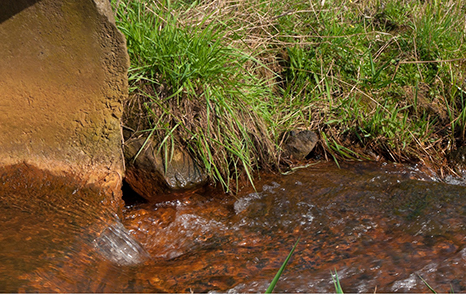
Stormwater Asset Management
Asset management is the strategic practice of operating, maintaining, and sustaining infrastructure assets to meet the needs and service levels identified by a community, while minimizing the total cost of owning and operating the assets.
Asset management is a management framework widely adopted by the utility sector to pursue and achieve sustainable infrastructure. It can help move systems from crisis management to informed decision making, facilitate more efficient and focused system operations and improve financial management to make the best use of systems’ limited resources. An asset management plan (AMP) serves as a tool to record an entire system’s asset management practices and strategies.
What are assets?
Assets are essentially all the infrastructure, equipment, property, buildings, people, and other components needed to provide safe and effective utility services, such as providing drinking water, collecting and treating sewage, and managing stormwater runoff and flooding. Utility services that benefit from asset management can also include transportation and energy services, and other infrastructure that support communities.
Large pieces of equipment or technology or natural infrastructure systems are typically the focus of asset management systems, because they are expensive to build, challenging to replace, require regular maintenance, and are essential to public health and quality of life.
Utility assets are not only the large pieces of equipment and plants that we see above ground, but also all the equipment that is located underground.
What are the benefits of asset management?
- Improved protection of public health & environment
- Improved infrastructure service reliability, resiliency, and sustainability
- Responsiveness to existing and future conditions & long-term system integrity
- Improved public safety
- Increased knowledge of the system allows better financial and management decisions
- Enables efficient and cost-effective operation of the system and delays replacement costs
- Reliable infrastructure promotes economic development
What are the core questions to ask when developing an asset management framework?
- What is the current state of the infrastructure system assets?
- What is the required sustained level of service?
- Which assets are critical to sustained performance?
- What are the best “minimum life‐cycle cost” Capital Improvement Plan and operations & maintenance (O&M) strategies?
- What is the best long‐term financing strategy?
What is stormwater asset management?
Stormwater asset management is simply the application of asset management practices and strategies to the stormwater system serving communities, towns, and regions. A general set of asset management processes are identified above; and specific asset management procedures have been developed in the industry for stormwater management systems. Components of stormwater systems that are typically the subject of asset management practices are:
Typical Stormwater System Assets
- Inlets
- Pipes
- Treatment facilities (e.g., grit chambers, stormceptors, draintile, etc.)
- Green infrastructure (e.g., infiltration basins, raingardens, bioswales, wetlands, detention/retention basins, ponds, etc.)
- Outlets
- Channels and Culverts
- Lift/Pump stations
Service needs and design differences exist between stormwater and wastewater systems, even though the O&M procedures for each can overlap due to the similarity of system elements. However, stormwater systems, especially with the expanding implementation of green infrastructure systems, create unique operational and service needs that influence the content of an AMP. For example, newly created AMPs now address the classification and incorporation of green infrastructure controls, and their unique maintenance requirements.
An AMP in this context is a strategic, comprehensive tool for managing stormwater system assets to help meet chosen levels of service, and minimize the long-term investment in each asset, keeping expenditures commensurate with desired performance and regulatory requirements. A stormwater AMP prioritizes the most important projects by cataloging assets, identifying performance objectives, conducting a life-cycle analysis, identifying effective maintenance schedules, and conducting a cost-of-failure criticality analysis of stormwater assets.
How can stormwater system assets fail?
Circumstances that can contribute to an asset failing include, but are not limited to, erosion and washout, flooding, physical deterioration from age or usage, insufficient design and capacity.
What is the likelihood (probability) and consequence of specific stormwater asset failure?
Likelihoods of failure often depend on age, condition, design, installation, and current loading. Consequences of failure often depend on how critical the asset functions in reducing local flooding, routing stormwater runoff, protecting local properties
and structures, and protecting water quality.
Learn more about stormwater asset management
This page and the Toolkit websites identified above are informed by these resources.

